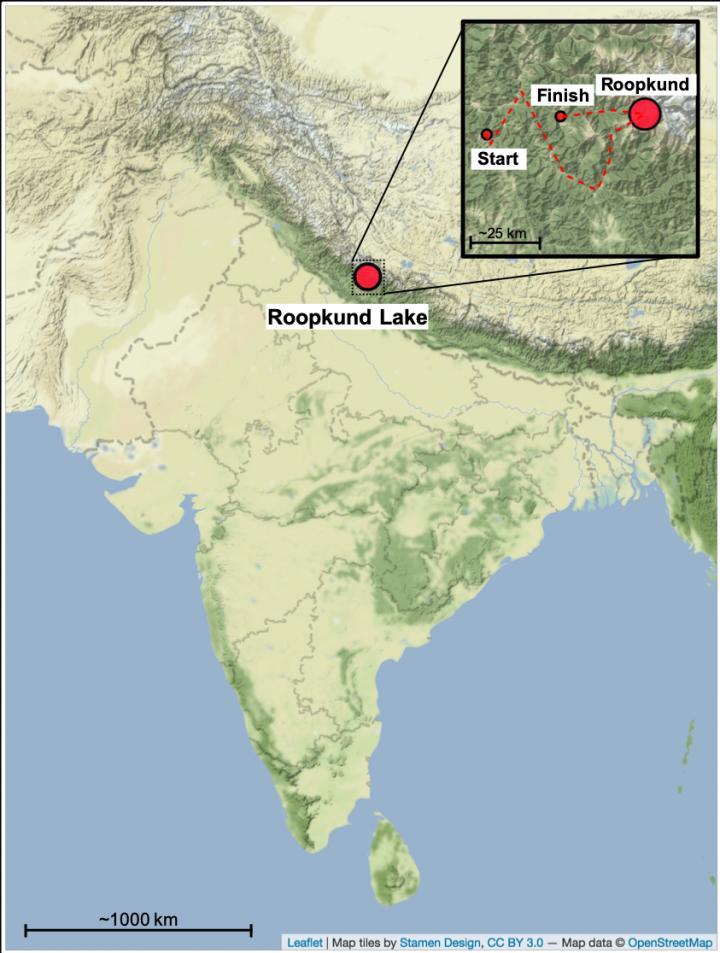Roopkund Lake in the Indian Himalayas has several hundred bodies scattered around and within it, earning the nickname “Skeleton Lake”. Local tales refer to an ancient party caught in a mountain hailstorm. However, an analysis of the ages and genomes of the bones reveals something much stranger and harder to explain: the victims were separated by 1,000 years and had very different origins.
Located 5,000 meters (16,400 feet) above sea level, Roopkund is higher than any mountain in Western Europe or the contiguous US, so getting there is far from easy. It’s also just 40 meters (130 feet) across. However, something must have made it worth the effort because when a team from many universities sampled the genome-wide DNA from 38 of Roopkund’s skeletons, they found three very distinct ethnicities.
As expected, the majority were Indian, but the DNA of 14 others reveals eastern Mediterranean, most likely Greek island, heritage. A single individual’s ancestry appears to have been in Southeast Asia, almost as distant in the opposite direction.

Map showing location of Roopkund Lake in the Himalayas, with the inset showing the route of the Nanda Devi Raj Jat pilgrimage.
Image credit: Harney et al., Nature Communications 2019
Moreover, instead of a single storm killing them all, radiocarbon dating indicated the locals died more than 1,000 years ago, while the visitors were much more recent, probably around 1800 CE. More oddly still, the older group appears to have come from many parts of India, with at least two centuries between the oldest and youngest of that population.
“Through the use of biomolecular analyses, such as ancient DNA, stable isotope dietary reconstruction, and radiocarbon dating, we discovered that the history of Roopkund Lake is more complex than we ever anticipated, and raises the striking question of how migrants from the eastern Mediterranean, who have an ancestry profile that is extremely atypical of the region today, died in this place only a few hundred years ago,” Professor David Reich of Harvard Medical School said in a 2019 statement.
The findings, published in the journal Nature Communications in 2019, marked the first report of the successful collection and analysis of whole genome ancient DNA from India. DNA seldom survives well in hot climates and the high-altitude lake is one of the few places on the subcontinent cold enough to preserve it.
The findings were so improbable that Reich and co-authors checked them by testing the bones’ isotopes, confirming great variations in their diets and likely places of origin.
One part of the local stories does appear to be true: Some of the skulls found at the site show damage consistent with being hit by large hailstones, and almost half were women. Yet none of those sampled were related to each other. The authors think they were pilgrims walking to a nearby temple, but can’t explain the more recent population.
An earlier version of this story was originally published in August 2019.
Source Link: "Skeleton Lake" In The Himalayas Is Filled With Hundreds Of Ancient Humans